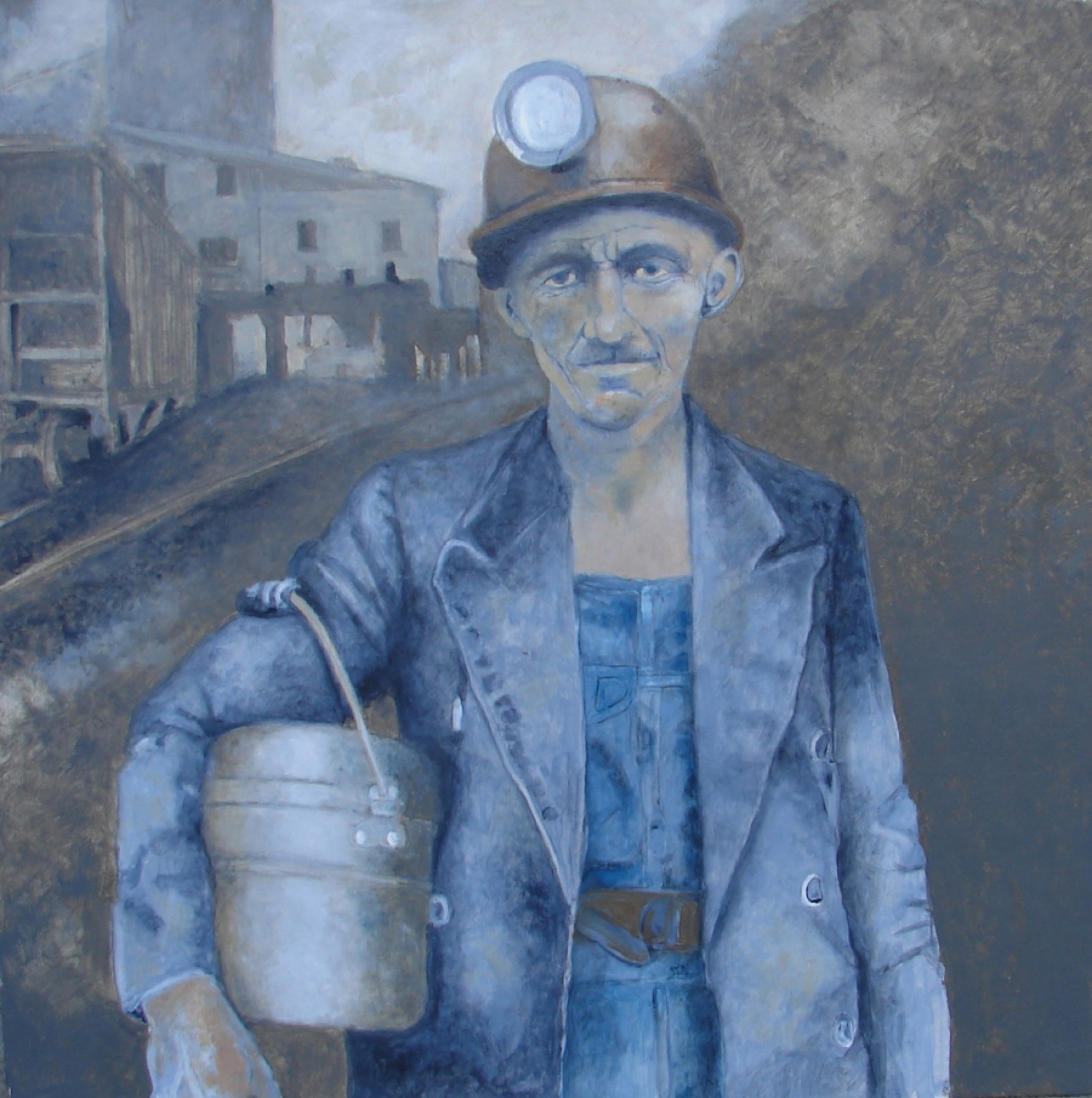
Bucket in arm going home, 2015. All images © Bob Howard
HARLAN COUNTY, HOME
By Noah Gallagher Shannon
For the “Ballad of Harlan County,” published in Oxford American’s Summer issue, Elyssa East traveled to Harlan, Kentucky, to ask questions about her family’s legacy as coal company bosses, in an area and age now infamous for labor disputes. Since long before the 1970s, when Harlan County, USA captured the murders and blood feuds that erupted during the “Brookside strike,” provincial violence has been the stock narrative of a “backward” Appalachia. But of course, as townspeople told East, “No one ever gets Harlan right.” This misrepresentation of the Mountain South is part of the reason the OA selected Bob Howard’s lucid oil paintings and watercolors as a companion to East’s essay. A retired miner, art teacher, and high school principal, Howard is native to Harlan County, and bent on enjoining reality to realism.
“My father was a coal miner for thirty-five years and died of black lung,” Howard told me, while resting from the heat and overhead brushstrokes of the outdoor mural he’s working on for a local food pantry. “When I [told my father] I wanted to study art—well, that wasn’t well received.” Howard grew up in the fields and rivers of Highsplint, a camp named for the seam its residents mined. Not unlike the fracking boomtowns that now dirty the rural West, Highsplint once bustled with shops and a movie theater—all of it the mine’s. Vulnerable to stock, the town nosedived with its parent company in the seventies. “Now, in Highsplint, there’s nothing,” Howard said.
To come from a place that no longer exists is a meditative thing. It has textured Howard’s paintings with the minute shades and shadows of what he calls “Appalachian Realism.” Saddened by watching pyramid peaks planed clean by mountaintop removal, Howard is a subtle noticer of how scenery traps layers of time, yielding depth on a canvas. He can stand in Highsplint, with working mines nearby, and see “the old broken tree where I first met my wife while painting a friend’s race car.” It was near the same spot, further back in time, “where the picketers would share their donuts with us by the fire-barrel while we waited on the school bus.” Nostalgic seems too mean a word, to my ear, for a man who lives and paints what his home used to be.
Many of Howard’s images are culled directly from his memory of working underground as a drift seam miner for fifteen years. To pay for his art degree and master’s in education, Howard erected support beams, laid track, and wrenched on diesel machinery. “I’d go down Friday and sometimes wouldn’t see daylight until Monday class.” Few coworkers knew he painted; even fewer classmates that he mined. Still, shuttling between tunnels and halls proved invaluable training for a teacher and principal (the first of Harlan County High School). “Most people thought they needed a high profile doctor in education from outside the county to come in,” he told me. “I knew the pedagogy, but I also knew the realities facing families, facing ambitious kids—and how to bring rivals together.”
Harlan County, USA’s portrayal of his community’s warring factions isn’t inaccurate so much as incomplete, Howard said. “Every few years the workers need a new contract, the picket lines shift, and people go back to work. They’re enemies, then they’re drinking buddies again.” It’s that second rotation in the cycle of trouble—from strife back to embrace—that often goes missing from outsiders’ art. He could remember a time, during the Brookside years, when he found himself facing a picket line. “I idled there in the road a long time, staring. The police were there. It felt like it could get violent. Then someone said, ‘that’s the Howard boy.’ Slowly, more nodded, and the crowd parted.”
Today, Howard is a board member of the Harlan County Arts Council, which along with the University of Kentucky is remodeling a three-story, downtown Harlan building into an arts center, studio space, and theater. Although a teacher had once advised Howard to get out of Harlan, I find it obvious now why he stayed.
Below is a supplemental helping of Howard’s paintings—all of them scenes from around Harlan County—with captions by the artist.
https://main.oxfordamerican.org/item/931-harlan-county-home#sigProId2f1155f1ea
For more from the Oxford American, subscribe to our weekly newsletter.


